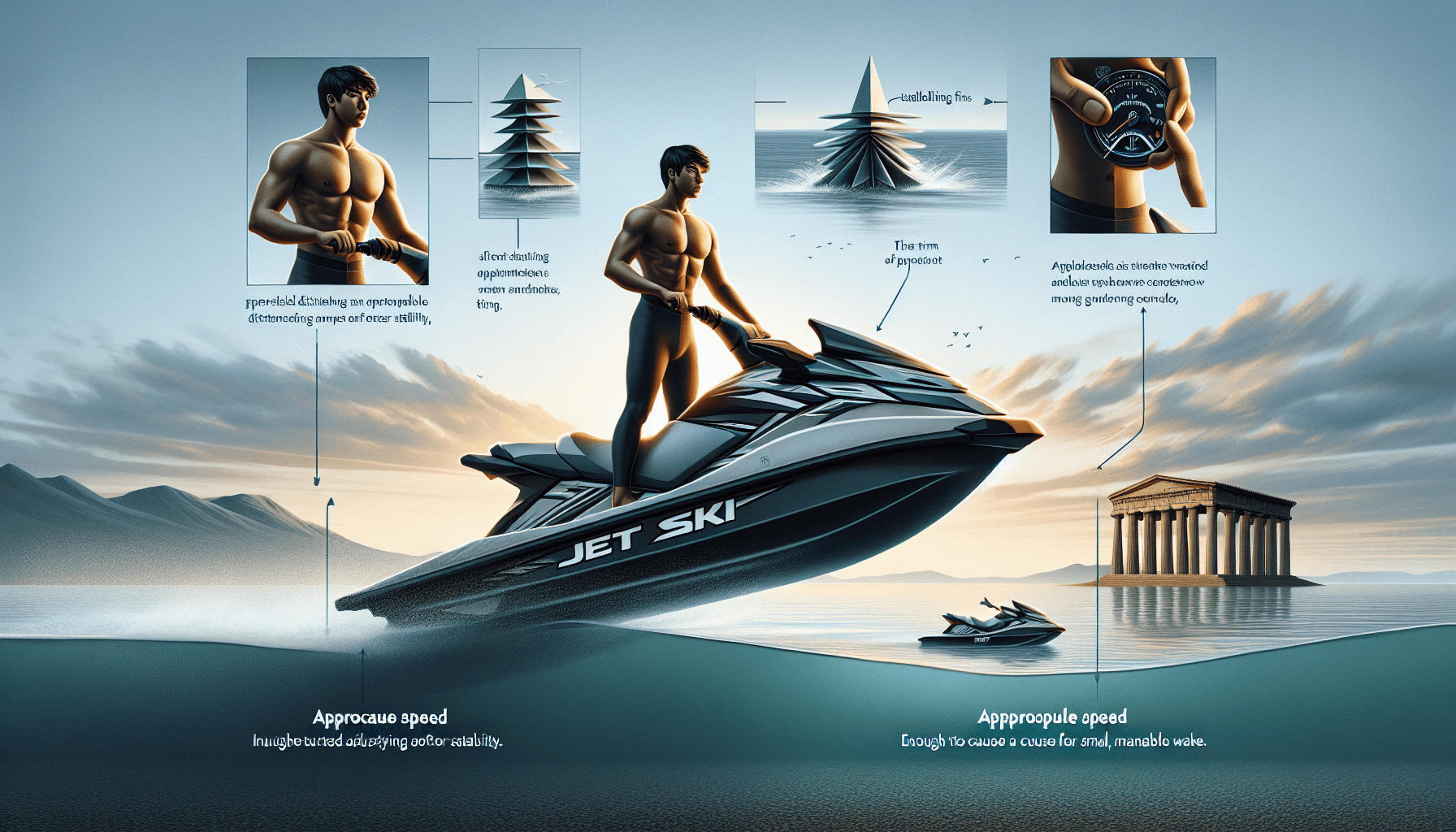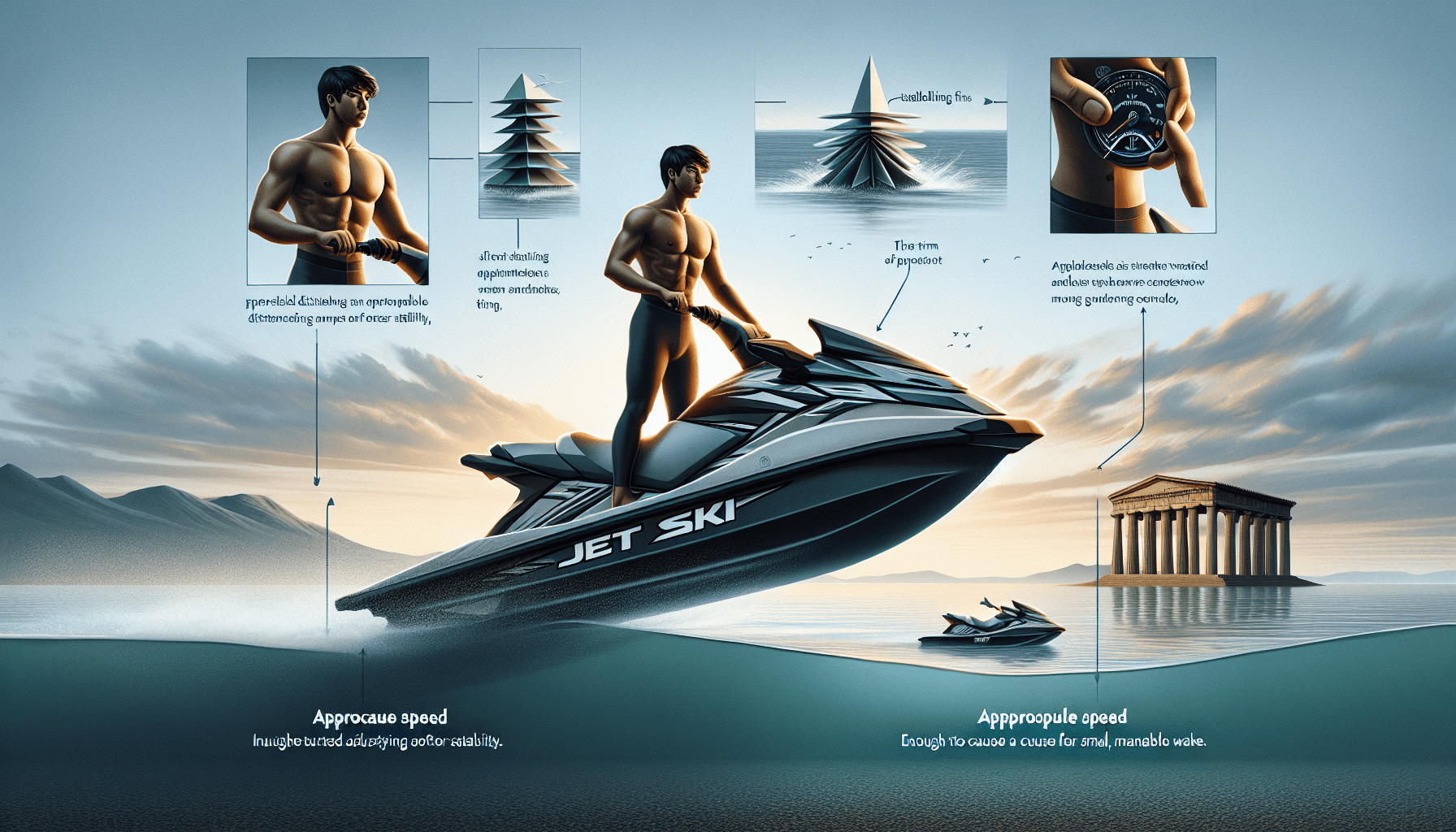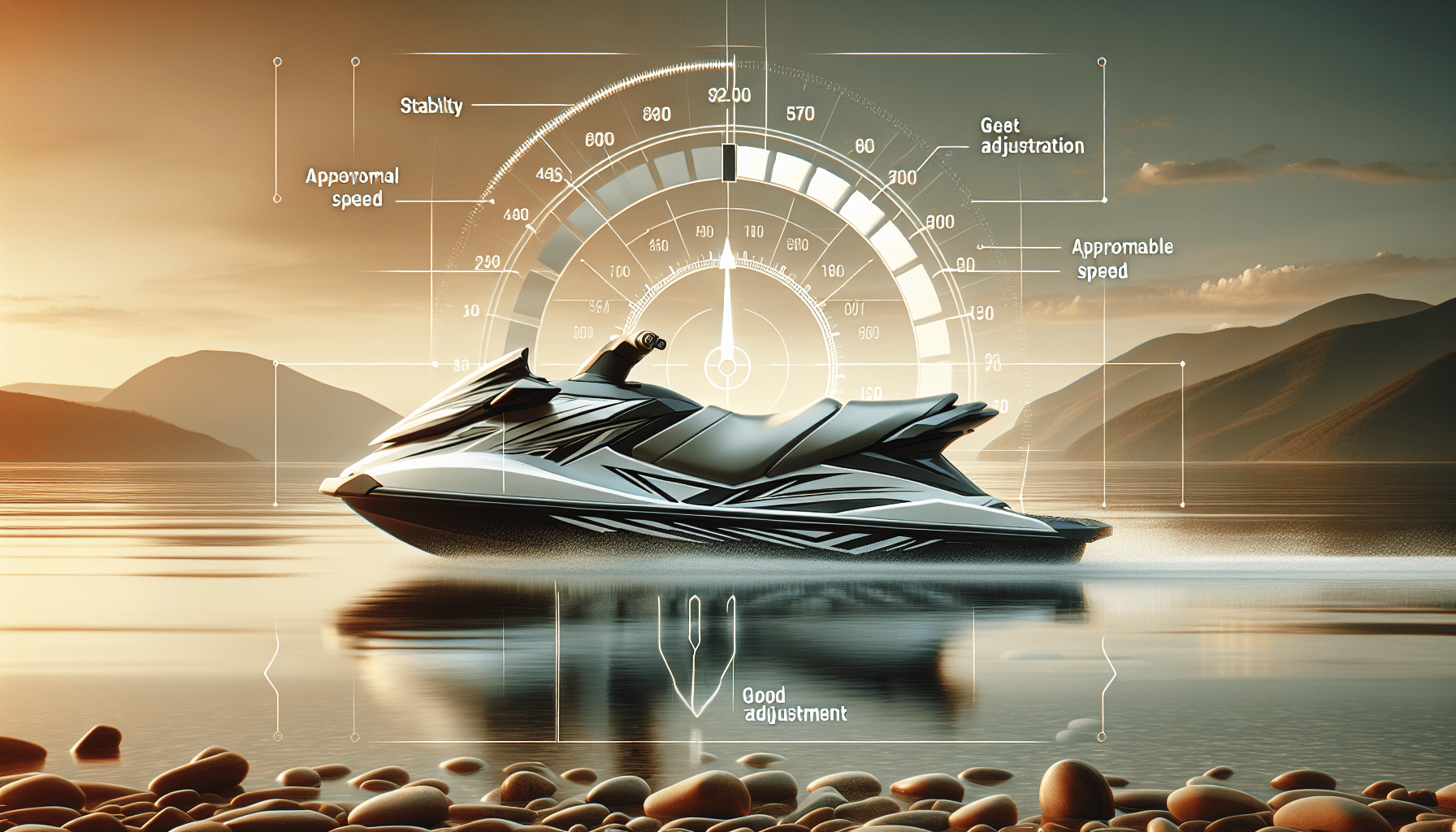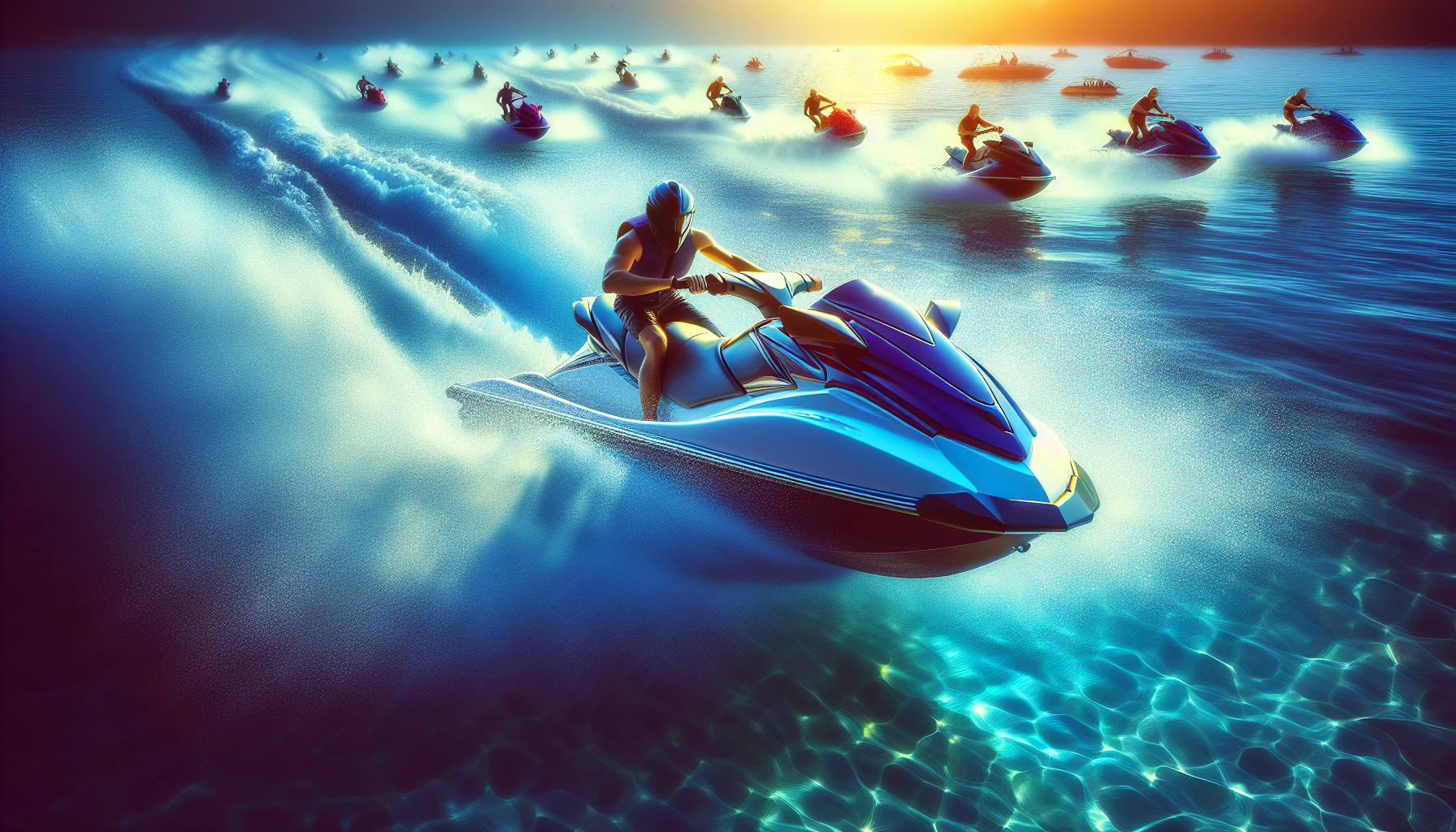How Can I Make My Jet Ski More Stable?

If you find yourself asking, “How can I make my jet ski more stable?” then look no further than A2Z Powersport. As the go-to company that knows all about jet skis and the industry, A2Z Powersport has the expertise to help you enhance the stability of your jet ski. Whether you’re a seasoned jet skier or just starting out, their team of professionals can provide you with the best recommendations to ensure a smoother and more stable ride. Located in Orange Beach, AL, at the Fort Morgan Marina, A2Z Powersport offers a wide range of jet ski rentals for you to choose from. So, get in touch with them today to experience the thrill of a stable and exhilarating jet ski ride.
Regular Maintenance
Regular maintenance is crucial in keeping your jet ski stable and in optimal condition. By following these simple maintenance steps, you can ensure that your jet ski performs at its best.
Check and adjust the trim
The trim of your jet ski plays a significant role in its stability. By adjusting the trim to the proper level, you can improve its handling and stability in various water conditions. Start by checking the manufacturer’s recommendations for trim adjustment and make any necessary adjustments to suit your personal preference.
Inspect and clean the intake grate
The intake grate is responsible for allowing water to flow in and cool the engine. Over time, debris such as seaweed or sand can get stuck in the intake grate, affecting the performance and stability of your jet ski. Regularly inspecting and cleaning the intake grate will ensure maximum water flow and prevent any issues that may arise from clogs.
Ensure proper weight distribution
Proper weight distribution is essential for a stable ride on your jet ski. Distribute weight evenly between the front and back to maintain stability. Pay attention to any added accessories or gear that may affect weight distribution and make adjustments accordingly.
Maintain proper tire pressure
If your jet ski is equipped with trailer tires, maintaining proper tire pressure is crucial for stability during transport. Check the manufacturer’s recommendations for the correct tire pressure and regularly inspect and inflate your tires to the appropriate level.
Upgrading Parts
Upgrading specific parts of your jet ski can significantly enhance its stability and overall performance. Consider the following upgrades to make your jet ski more stable.
Install a stabilizer bar
A stabilizer bar, also known as a sway bar, can greatly improve the stability of your jet ski. This aftermarket accessory helps reduce body roll during turns, resulting in a more controlled and stable ride. Consult with a jet ski mechanic or refer to your jet ski’s manual to determine the compatibility and installation process for a stabilizer bar.
Upgrade to a wider hull
A wider hull provides increased stability by distributing weight more evenly and offering better balance on the water. Consider upgrading to a jet ski with a wider hull design or consult with a jet ski mechanic to determine if there are wider hull options available for your specific model.
Replace old and worn-out springs
If you notice that your jet ski feels unstable or bounces excessively, worn-out springs could be the culprit. Replace old or damaged springs with new ones to improve stability and ride quality. Consult with a jet ski mechanic to ensure that you choose the right springs for your jet ski model.
Consider installing a sponson kit
Sponsons are attachments that can be added to the sides of your jet ski to improve stability and maneuverability. They enhance the jet ski’s ability to track straight and corner more effectively, providing a more stable and controlled ride. Research different sponson kits available on the market and consult with a jet ski mechanic for guidance on the installation process.
Improving Technique
While upgrades and modifications can enhance stability, improving your technique is equally important. By mastering these techniques, you can enjoy a stable and controlled ride on your jet ski.
Learn proper body positioning
Proper body positioning can significantly impact your jet ski’s stability. Shift your weight forward when accelerating and lean back slightly when decelerating to maintain balance and stability. Additionally, keeping your body relaxed and flexible allows you to react to waves and turns more effectively.
Practice throttle control
Maintaining proper throttle control is key to a stable ride. Smoothly increase or decrease throttle pressure to avoid sudden jerks or acceleration that can compromise stability. Practice adjusting your throttle in different water conditions to develop a feel for optimal control.
Master cornering techniques
Cornering is a skill that requires practice to maintain stability and control. Proper technique involves leaning into the turn and using your body weight to counterbalance the forces acting on the jet ski. Gradually increase your speed as you gain confidence in your cornering abilities, always prioritizing stability and control over speed.
Improve balance and weight shifting
Maintaining a balanced and stable posture on your jet ski is crucial for stability. Practice shifting your weight from side to side and front to back to adapt to changing water conditions and maintain stability. Focus on keeping your core engaged and your body relaxed while riding.
Adding Ballast or Weight
Adding ballast or additional weight to your jet ski can enhance stability, especially in rough water conditions. Consider the following methods to add ballast or weight to your jet ski.
Use sandbags or weights
Placing sandbags or weights strategically in different parts of your jet ski can help create better stability. Experiment with positioning to find the optimal weight distribution that enhances stability without affecting performance.
Add water to onboard storage compartments
If your jet ski has onboard storage compartments, consider utilizing them to add water as ballast. Fill the compartments partially with water to increase the weight and stability of your jet ski. Be mindful of the added weight and ensure it does not exceed the manufacturer’s weight limits.
Modifying Jet Ski Design
Modifying the design of your jet ski can contribute to improved stability. Consider the following modifications to enhance your jet ski’s stability.
Lower the seat height
Lowering the seat height can lower the center of gravity of your jet ski, resulting in improved stability. Consult with a jet ski mechanic or research seat height modification options available for your specific model.
Add additional flotation devices
By adding extra flotation devices, such as foam pads or inflatable tubes, to the sides or underneath your jet ski, you can increase its buoyancy and stability. Ensure proper installation and compatibility with your jet ski model when adding flotation devices.
Install a larger and heavier impeller
The impeller plays a crucial role in propelling your jet ski through the water. By upgrading to a larger and heavier impeller, you can increase stability and overall performance. Consult with a jet ski mechanic to determine if a larger impeller is suitable for your model and to ensure proper installation.
Consider Jet Ski Modifications
In addition to design modifications, there are specific aftermarket modifications that can enhance the stability of your jet ski.
Add aftermarket sponsons
Aftermarket sponsons are available in various shapes and sizes and can significantly improve stability and maneuverability. Research different sponson options that are compatible with your jet ski model and consult with a jet ski mechanic for installation and compatibility advice.
Install a jet ski lift kit
A jet ski lift kit allows you to adjust the ride height of your jet ski, offering more stability and control. Lift kits are available in different configurations, so consult with a jet ski mechanic to determine the best option for your specific jet ski model.
Upgrade the jet pump
The jet pump is responsible for propelling your jet ski through the water. Upgrading to a higher-performing jet pump can improve stability, acceleration, and overall handling. Speak with a jet ski mechanic to explore different jet pump upgrade options for your specific model.
Replace the handlepole and handlebars
Handlepole and handlebar replacements can enhance stability by providing better control and grip. Look for handles and bars specifically designed for stability and consult with a jet ski mechanic to ensure compatibility with your jet ski model.
Seek Professional Help
If you’re unsure about making modifications or improvements to your jet ski, it’s always wise to seek professional help. For expert advice and guidance, consider the following options.
Consult with a jet ski mechanic
Jet ski mechanics specialize in the maintenance and modifications of jet skis. Consult with a reputable mechanic who can guide you on the best modifications and improvements to enhance stability and performance.
Get advice from experienced riders
Experienced jet ski riders often have valuable insights and knowledge on improving stability. Reach out to fellow riders or join online forums and communities to seek advice and recommendations.
Attend jet ski training or lessons
Formal training or lessons can help you improve your riding skills and techniques. By attending training courses, you can learn from experienced instructors who can provide guidance on stability and control.
Choose the Right Jet Ski
When purchasing or renting a jet ski, selecting the right model can make a significant difference in stability. Consider the following factors to choose a jet ski that meets your stability needs.
Consider a model with a wider hull
Jet skis with wider hulls provide increased stability and better weight distribution, making them ideal for riders seeking a stable and controlled ride. Research various models with wider hull designs and consult with experts at A2Z Powersport to find the best option for you.
Opt for a larger and heavier jet ski
Larger and heavier jet skis often offer more stability due to their increased size and weight. Consider renting or purchasing a jet ski with these characteristics if stability is a top priority for you. A2Z Powersport can assist you in finding the right jet ski based on your preferences and needs.
Choose a jet ski with built-in stabilizers
Certain jet ski models come equipped with built-in stabilizers designed to enhance stability and control. These stabilizers can provide additional peace of mind for riders seeking a stable and reliable jet ski. Discuss your stability requirements with A2Z Powersport to explore models with built-in stabilizers.
Practice Regularly
Repetition and practice are key to improving your stability and control on a jet ski. By frequently riding and familiarizing yourself with your jet ski, you can develop the necessary skills to handle various water conditions.
Familiarize yourself with your jet ski
Spend time becoming familiar with your specific jet ski model, its controls, and handling characteristics. This familiarity will help you better understand how it responds in different situations and ensure a more stable and controlled ride.
Get comfortable with various water conditions
Practicing in different water conditions, such as calm lakes, choppy waves, or strong currents, will help you adapt and improve your stability. Gradually expose yourself to different conditions, always prioritizing safety, and gradually build up your confidence and skill level.
Ensure Safety Gear and Equipment
Prioritizing safety is crucial when riding a jet ski. Always ensure you have the necessary gear and equipment to keep you safe on the water.
Wear a proper fitting life jacket
A properly fitting life jacket is essential for safety while riding a jet ski. Choose a Coast Guard-approved life jacket that fits snugly and provides the necessary buoyancy and protection. A2Z Powersport can recommend the appropriate life jacket based on your needs and preferences.
Use a tether or kill switch
A tether or kill switch is a safety device that stops the engine if the rider is separated from the jet ski. Utilizing this device ensures that the jet ski immediately shuts off in case of an emergency, preventing accidents and ensuring your safety.
Have an emergency whistle or signaling device
Carrying an emergency whistle or signaling device can be crucial in alerting others in case of an emergency or distress. These devices help attract attention and assist in summoning help when needed.
By following these tips and recommendations, you can make your jet ski more stable and enjoy a safe and controlled ride on the water. Remember to consult with professionals at A2Z Powersport for expert advice and assistance in making the most suitable modifications or upgrades to enhance the stability of your jet ski.








